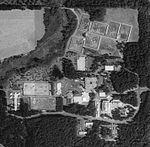Planar Systems
1983 establishments in Oregon1993 initial public offerings2015 mergers and acquisitionsAmerican subsidiaries of foreign companiesCompanies based in Hillsboro, Oregon ... and 6 more
Companies formerly listed on the NasdaqCorporate spin-offsDisplay technology companiesElectronics companies established in 1983Electronics companies of the United StatesManufacturing companies based in Oregon
Planar Systems, Inc. is a digital display manufacturing corporation with a facility in Hillsboro, Oregon. Founded in 1983 as a spin-off from Tektronix, it was the first U.S. manufacturer of electroluminescent (EL) digital displays. Planar currently makes a variety of other specialty displays, and is a subsidiary of Leyard Optoelectronic Co. since 2015.
Excerpt from the Wikipedia article Planar Systems (License: CC BY-SA 3.0, Authors).Planar Systems
Northeast Compton Drive, Hillsboro Amberglen
Geographical coordinates (GPS) Address Website External links Nearby Places Show on map
Geographical coordinates (GPS)
| Latitude | Longitude |
|---|---|
| N 45.52794 ° | E -122.88345 ° |
Address
Planar Systems
Northeast Compton Drive 1195
97006 Hillsboro, Amberglen
Oregon, United States
Open on Google Maps









